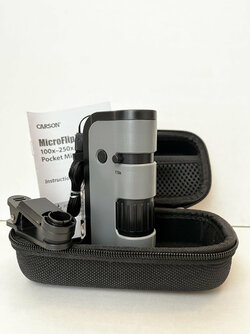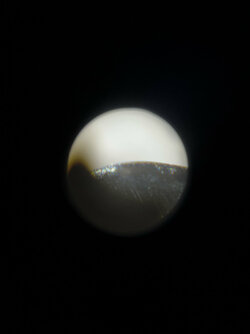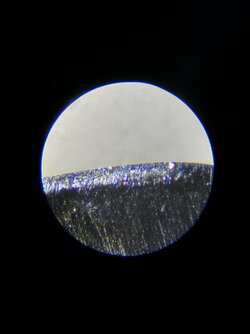I got my Carson MicroFlip 100-250x early and have taken it for a spin. The things I am seeing briefly are incredible, then everything moves and it's gone. I have spent over thirty minutes hunched over this thing with and without the cell phone and I am in too much pain to even continue. All I can say is, hats off to the people that are taking incredible photos with these things.
I will get something eventually, but if it is going to take me 10 minutes after X number of laps on the stones to get a picture I don't know how useful this is going to be. The microscope has to be on the blade, but putting it on there causes everything to move around. I get focus then it's gone, partly my camera flipping out. I guess this is at least worth what I paid for it. Maybe a jig needs to be made so the microscope can remain stationary while moving the blade?



I will get something eventually, but if it is going to take me 10 minutes after X number of laps on the stones to get a picture I don't know how useful this is going to be. The microscope has to be on the blade, but putting it on there causes everything to move around. I get focus then it's gone, partly my camera flipping out. I guess this is at least worth what I paid for it. Maybe a jig needs to be made so the microscope can remain stationary while moving the blade?










